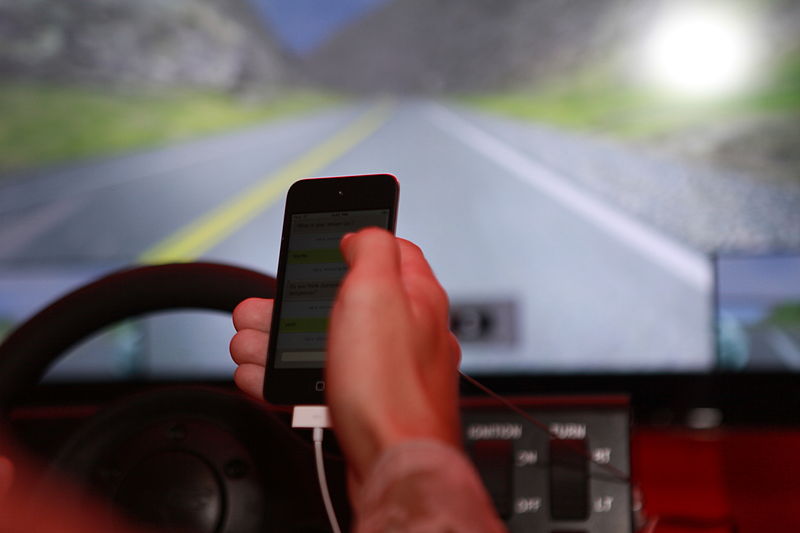The National Safety Council has designated April as Distracted Driving Awareness Month. Both inside and outside the vehicle, distractions are everywhere for the modern driver. Distracted Driving Awareness Month is the perfect time to create an honest self-inventory of our driving habits.
Driving distractions fit into three categories:
- Manual – removing your hands from the wheel

- Visual – taking your eyes off the road
- Cognitive – taking your mind off driving
Every fraction of a second matters while driving. Modern driving distractions take away drivers’ attention from the traditional perils they should be focusing on behind the wheel, such as changing conditions, road signs and signals, and other vehicles.
Use the following 10 suggestions to help you avoid driving distractions and practice safety on the road:
- Hang up and drive. Whether texting or talking, drivers who use smartphones and other hand-held mobile devices are four times more likely to get into a serious crash involving injury, according the National Transportation and Safety Bureau and Monash University.
- Tell others you will be driving. If possible, make your family, friends, and co-workers aware of the times you plan to be driving, so they may contact you before or after your drive.
- Look at other drivers. Be aware of other drivers who appear distracted and plan accordingly. Steer clear of distracted drivers and perhaps give a friendly reminder beep of the horn.
- Do not read while driving. Even in stop-and-go traffic, reading is an extremely dangerous distraction. Remain focused and aware of the road-traffic environment and changes that will affect you or other drivers. If you must read, pull over in a safe location to read maps or directions.
- Do not groom yourself or eat while driving. Combing your hair, putting on makeup, and consuming food are dangerous yet often overlooked driving distractions. Wait until you arrive at your destination to eat or adjust your appearance.
- Plan ahead for children’s needs. Both expected and unexpected, children have a variety of needs while they are in a vehicle. Enable yourself to stay focused on the primary responsibility of driving by thinking ahead and having toys, snacks, and activities in the back seat so they can easily reach them.
- Fix vehicle controls at stoplights. Changing interior vehicle controls like the radio, mp3 player, or temperature controls can wait until you have stopped at a red light or stop sign.
- Stay alert. Driver fatigue is an extremely common and dangerous source of driver distraction. Pull off the road into a designated rest area or other safe zone to take a nap if necessary. If there is a passenger in your vehicle, suggest that he or she take over driving so you can rest.
- Be aware of state laws regarding distracted driving. Not only do distracted drivers put themselves, their passengers, and other drivers at risk, but they may also be breaking the law. Click here to familiarize yourself with your state’s distracted driving laws.
- Take the cell-free pledge. The National Safety Council’s online safety pledge allows you to commit to driving free from any mobile communication distractions, including both hand-held and hands-free phone conversations and texting. Click here to sign the pledge and share it with your family and friends.
In the everyday bustle of life, work, and family, we sometimes get distracted from staying focused on the real dangers all around us. Distracted driving is something responsible drivers can actually do something about. By simply reminding ourselves of our responsibilities behind the wheel, we can make the road a safer place for everyone.
At Eaton & Berube, keeping you and your loved ones safe is our priority. For additional safety tips and useful resources, please subscribe to our blog or contact us.
